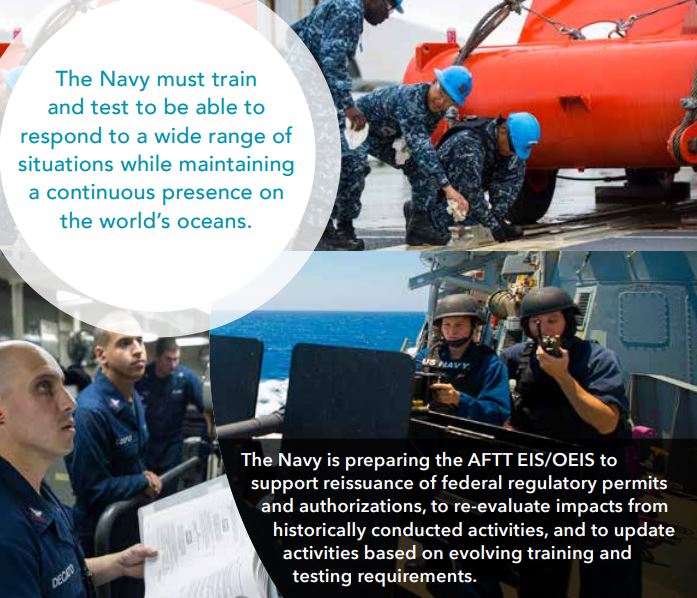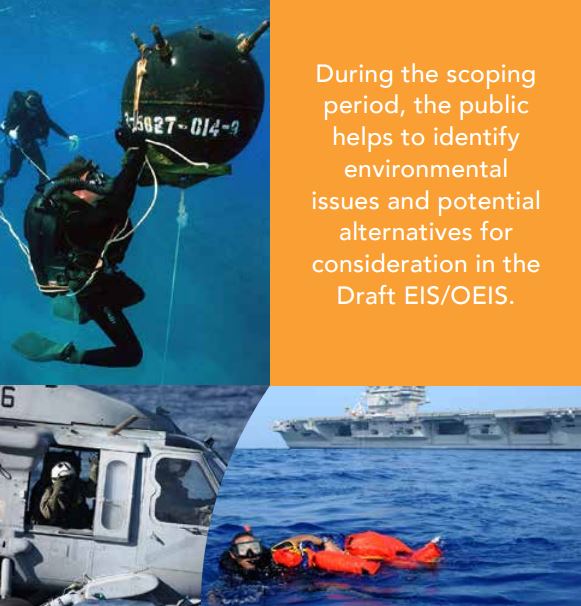PROPOSED ACTION
The Navy proposes to conduct training and testing activities within the AFTT Study Area, including activities that involve the use of sonar and explosives. Training Sailors and testing systems are necessary to achieve and maintain military readiness. Proposed activities to the the types of activities that have been occurring in the AFTT Study Area for decades and are generally consistent with those analyzed in the AFTT EIS/OEIS, completed in 2013, and earlier environmental planning documents.

EVALUATING ALTERNATIVES
The National Environmental Policy Act (NEPA) requires federal agencies to evaluate a range of reasonable alternatives to achieve the purpose of and need for the proposed action. The Navy is developing alternatives based on the levels and types of training and testing needed to meet future requirements.
